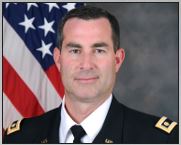Is There an International Legal Basis for the ‘Bloody Nose’ Strategy?
The recent bilateral talks between North and South Korea in the town of Pyeongchang seem to have de-escalated tensions on the peninsula. The North has agreed to participate in the upcoming Winter Olympics, and the two nations have resumed military-to-military communication. In fact, the two countries’ athletes will walk together—under one flag representing a unified Korea—in the opening ceremonies of the Olympics.
Published by The Lawfare Institute
in Cooperation With

The recent bilateral talks between North and South Korea in the town of Pyeongchang seem to have de-escalated tensions on the peninsula. The North has agreed to participate in the upcoming Winter Olympics, and the two nations have resumed military-to-military communication. In fact, the two countries’ athletes will walk together—under one flag representing a unified Korea—in the opening ceremonies of the Olympics.
Yet, despite these reconciliatory acts, Ri-Son-kwon, the leader of the North Korean delegation, has refused to discuss his country’s nuclear weapons or missile program. Instead, when asked by the South Korean delegation, Ri-Son-kwon simply stated “our cutting-edge weapons, including our hydrogen bomb and intercontinental ballistic missiles, are not targeting our Korean brothers, China or Russia, but the United States.” This statement is not surprising, as it mirrors the rhetoric of North Korean leader Kim Jong Un’s New Year’s Day speech, in which he bragged that “the entire United States is within range of our nuclear weapons, and a nuclear button is always on my desk.”
These comments capped off a 2017 filled with North Korean threats and hostile activities. In February, the regime began a rapid cycle of launching increasingly sophisticated missiles. The most recent, an intercontinental ballistic missile reportedly “capable of delivering a warhead to anywhere in the continental United States,” landed in Japan’s exclusive economic zone. Following U.S.-South Korean military drills in October, North Korea expressly reiterated its long-standing threat to launch a “salvo of missiles” against Guam. And in September North Korea conducted a powerful nuclear test, reportedly of a hydrogen bomb, that triggered a magnitude-6.3 tremor upon detonation.
These actions resulted in strong rebukes from President Donald Trump, increased military exercises by the United States and South Korea, and tougher U.N. sanctions. Yet despite these measures, North Korea is extraordinarily close to becoming a global nuclear power. This very real possibility has reportedly resulted in the United States debating a limited military strike dubbed the “bloody nose” strategy. In effect, the proposal would allow for a timely and proportional response against North Korean sites in the event of another nuclear test or missile launch. For example, such a strike might include using force to target a North Korean missile site or a military base. The hope would be that such a strike would “bloody Pyongyang’s nose” and “illustrate the high price the regime could pay for its behavior” without “igniting an all-out-war on the Korean Peninsula.”
Many commentators have expressed doubt about the wisdom of such a strategy (for example, the first segment of the Jan. 10 episode of Rational Security contains an excellent discussion on the topic). Notwithstanding the merits of the policy decision, is there an international legal basis for the “bloody nose” strategy? The answer to this question involves an analysis of the international law concerning the resort to military force, referred to as the jus ad bellum. The primary legal source for the rules of the jus ad bellum is the United Nations Charter.
As one of us has previously written:
The drafters of the United Nations Charter decided the best way to “save succeeding generations from the scourge of war” was by preventing unilateral state action. To do this, they included Article 2(4) which states that “all members shall refrain in their international relations from the threat or use of force against the territorial integrity or political independence of any state, or in any other manner inconsistent with the purposes of the United Nations.” This rule only has two exceptions—if the United Nations Security Council collectively authorizes military action or if a state invokes their inherent right of individual or collective self-defense. Outside of this framework, any use of force is unlawful.
It is unlikely the Security Council would authorize a military strike against North Korea under the current circumstances. A “bloody nose” strike therefore must qualify as self-defense under Article 51 of the Charter to be internationally lawful. Under Article 51, States have the “inherent right of individual or collective self-defense if an armed attack occurs against a Member of the United Nations.” As the rule indicates, a state’s right to use force in self-defense is conditioned on the occurrence of an “armed attack.” North Korea’s boasting about its nuclear program and its far-reaching missile capability alone do not seem to qualify. However, were North Korea to launch an armed missile into another state’s sovereign territory, whether nuclear or conventional, such an act would clearly trigger the inherent right of self-defense.
More difficult is determining whether North Korea’s current behavior justifies the limited military strike proposed in the “bloody nose” strategy. Consider, for example, another North Korean test in which it launches an unarmed missile into Japanese sovereign territory. Arguably, a test rocket without armed explosives is merely a delivery system, not a “weapon.” On the other hand, such a rocket is capable of causing “injury to, or death of, persons” or “damage to, or destruction of, objects” and thus could be construed as a “weapon.” According to the U.N. General Assembly and the Rome Statute, a “[b]ombardment by the armed forces of a State against the territory of another State, or the use of any weapons by a State against the territory of another State” is an act of aggression. Such a North Korean missile launch would seem to fall within this definition and could reasonably be interpreted as an armed attack. This would, of course, trigger Japan’s individual right of self-defense and, more importantly for purposes of this post’s analysis, the United States’ right of collective self-defense.
The 1960 Treaty of Mutual Cooperation and Security between the United States and Japan states “[e]ach Party recognizes that an armed attack against either Party in the territories under the administration of Japan would be dangerous to its own peace and safety and declares that it would act to meet the common danger in accordance with its constitutional provisions and processes.” This treaty may provide a basis for the United States’ to engage in a limited retaliatory strike. One could argue that, pursuant to the 1986 Nicaragua case out of the International Court of Justice (ICJ), the United States would have to obtain Japan’s affirmative consent before engaging in a strike against North Korea in collective self-defense. However, Article 51 certainly does not refer to any such prerequisite, and the ICJ’s conclusion in Nicaragua is highly debatable. On a more practical note, it is highly unlikely Japan would oppose a collective self-defense strike by the United States.
Even without another missile targeting Japan, the United States could arguably rely on its own Article 51 individual right of self-defense to justify a “bloody nose” strike. While somewhat controversial, the United States interprets the individual right of self-defense to allow for a preemptive-but-proportional strike when the need to do so is imminent. In other words, if the United States determines North Korea’s behavior indicates a forthcoming attack it can act in self-defense before absorbing the first blow.
North Korea’s recent activities help support a preemptive self-defense argument. Despite extensive efforts by the international community, including through diplomacy, negotiations, collaboration, and sanctions, North Korea continues to defiantly test powerful nuclear weapons and launch ballistic missiles. Furthermore, it has gone to great lengths to conceal its nuclear testing program by creating underground facilities and intricate tunnel systems. This behavior, coupled with North Korea’s pattern of aggressive rhetoric and threats against the United States and other nations, makes a preemptive use of force seem more and more necessary. As the North Korean threat increases and non-military measures are exhausted, it becomes reasonable to believe that the last opportunity for the United States to act is fast approaching.
The wisdom of such a strike as a policy consideration is a separate matter. There would be significant risks to using military force, including the possibility that a strike would not significantly deter North Korea or that North Korea would misinterpret it, leading to an escalation of an already volatile situation. Nonetheless, if the United States elects to carry out a “bloody nose” strike, it would likely seek to justify the operation under self-defense. There is a strong argument such a strike would be lawful.





